Ko Samui, Thailand - A Photo Essay
Exploring the island of Ko Samui was a pure delight—sunny skies, plenty of art in the colorful temples, an excellent guide, and a Destination Beer. Our introductory visit checked all the boxes.
Awake at dawn, we step out onto our balcony, surrounded by the sights, sounds, and feels of a different world. We are slowly cruising in the Gulf of Thailand, approaching the island of Ko Samui. Everything shimmers in whites and the palest of pinks. Volcanic peaks emerge from the ocean surface—some rounded with wear, while others have sharp points and might be mistaken for a shark’s fin at first glance. Mist rises from the shorelines of the small islands, and some of the higher elevations are shrouded in clouds.
The rippling water now reflects a cloudscape, shifting to a bright white as the sun rises. The moon, full only three days ago, now looks as if its lower rim has scraped against the higher peaks and been shredded. Clouds emerge—a series of dotted clouds above the layers of cumulus. The ship pulls into a wide, shallow harbor and drops anchor.
We are at our next port of call, Ko Samui, Thailand's second-largest island.
Sherpa and I have booked ANCIENT TEMPLES, a 4.5-hour Regent-included tour that includes stops at three temples and a refreshment stop at a viewpoint.
Drive to Wat Khunaram for a guided tour.
Our guide, Chen, did an excellent job providing us with informative insights about the places we visited. As a practicing Buddhist—as are 95 % of the Thai population—these temples hold personal significance for him.
This site is most known for being the shrine to Luang Pho Dasang, aka the “mummy monk.” He died in 1973 and directed that his body be displayed as a testament to the transience of human life.
Chen stopped to pray at each altar, lit candles, and tossed the fortune sticks (The red containers at the bottom of the photo). A devout Buddhist can visit the temple; after making their offerings, they can shake one of these red containers containing a set of numbered sticks. The first stick to fall out represents their fortune. Chen consulted a chart of numbers on the temple wall to see what his fortune would be—he seemed satisfied with the results.
This is the chapel on the temple grounds where ordination of monks takes place—a very sacred site for practicing Buddhists.
Only a fifteen-minute bus ride from our first stop, we travel to Wat Plae Leam which is a much busier and more elaborate temple site.
Visit the Wat Plae Leam, a modern temple incorporating elements of Chinese and Thai Buddhist traditions.
This modern temple features a towering white statue of Guanyin, a goddess believed to be a protector of all beings and source of unconditional love. Her many arms are thought to symbolize her ability to reach out and provide help
Equally impressive is a statue of a large, white laughing Buddha; the temples feature designs and artwork created by Jarit Phumdonming, a renowned Thai artist.
On either side of the Guanyin statue, there are halls adorned with murals depicting Buddhist mythology.
Each temple has an ordinaton chapel, the sacred space where monks are ordained. Each Buddhist male is required to serve as a monk for at least three months.
The King of Thailand is also considered to be a deity.
Stop for a visit at the Big Buddha, or Wat Pha Yai, which features a 36-foot golden statue perched atop a wide staircase decorated with dragons.
Our last stop was at Big Buddha. The Big Buddha features a 49-foot-tall Buddha alongside numerous market stalls selling souvenirs, clothing, and food. It was the most commercial of the three sites we visited, but there was a sense of fun and community here, along with plenty of tourists. The other temples felt more like serious places for worship.
The tour was a great introduction to the temples of Ko Samui. Our guide was excellent and spoke not only about the history and culture but also added a personal touch to the tour by sharing stories of his upbringing, education, family life, and life as a tour guide.
Ko Samui’s popularity—and that of the Four Seasons Resort—has increased astronomically since the release of the TV show, White Lotus. Two couples on our tour asked to be dropped off at the Four Seasons so they could go to the bar for a drink or have lunch. They were informed that the property was at capacity and that they could only stop at the reception area, which is located roadside and far from the beach resort.
Following the tour, Sherpa and I walked back into town. While I enjoyed a massage at one of the nearby salons, Sherpa savored a Destination Beer. Win win.
Leo Lager Beer brewed by Boon Rawd Brewery in Bangkok, Thailand. 5.5% ABV. Sherpa’s Take: Straw-colored, light on the palate, smooth and malty flavor with a lingering hint of sweetness in the aftertaste. As the beer warms, the malty notes are more pronounced and the aftertaste lingers longer. A beach beer, served very cold. Nicely refreshing sitting in a corner cafe in downtown Nathon.” 5.5/10.
Despite the heat and humidity, we had a great time exploring in Ko Samui.

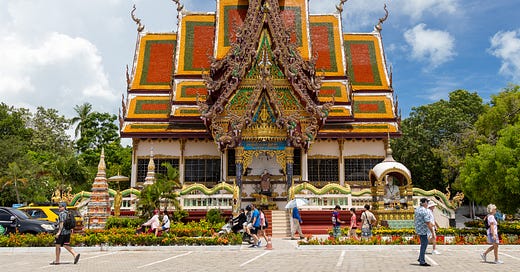


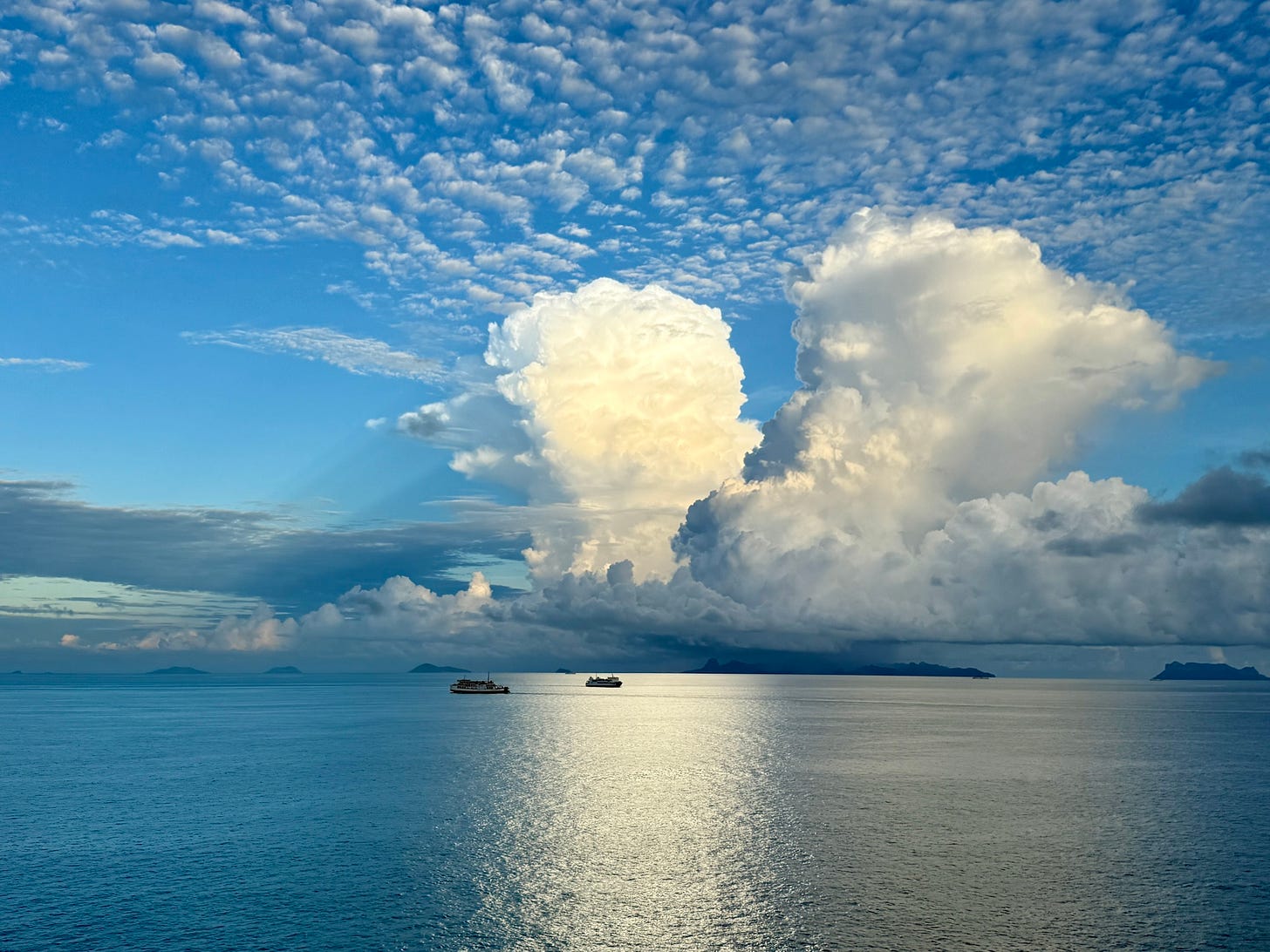
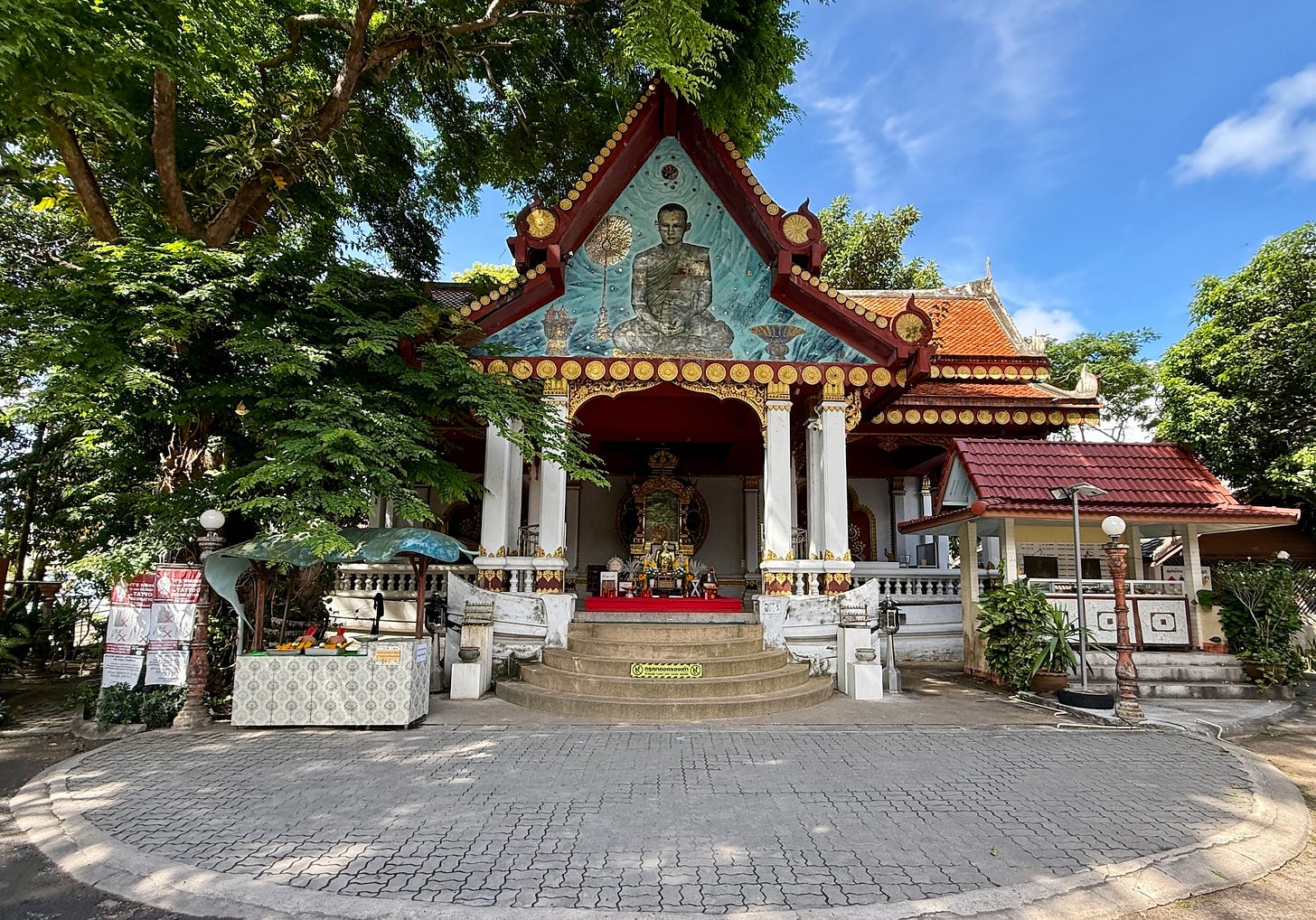
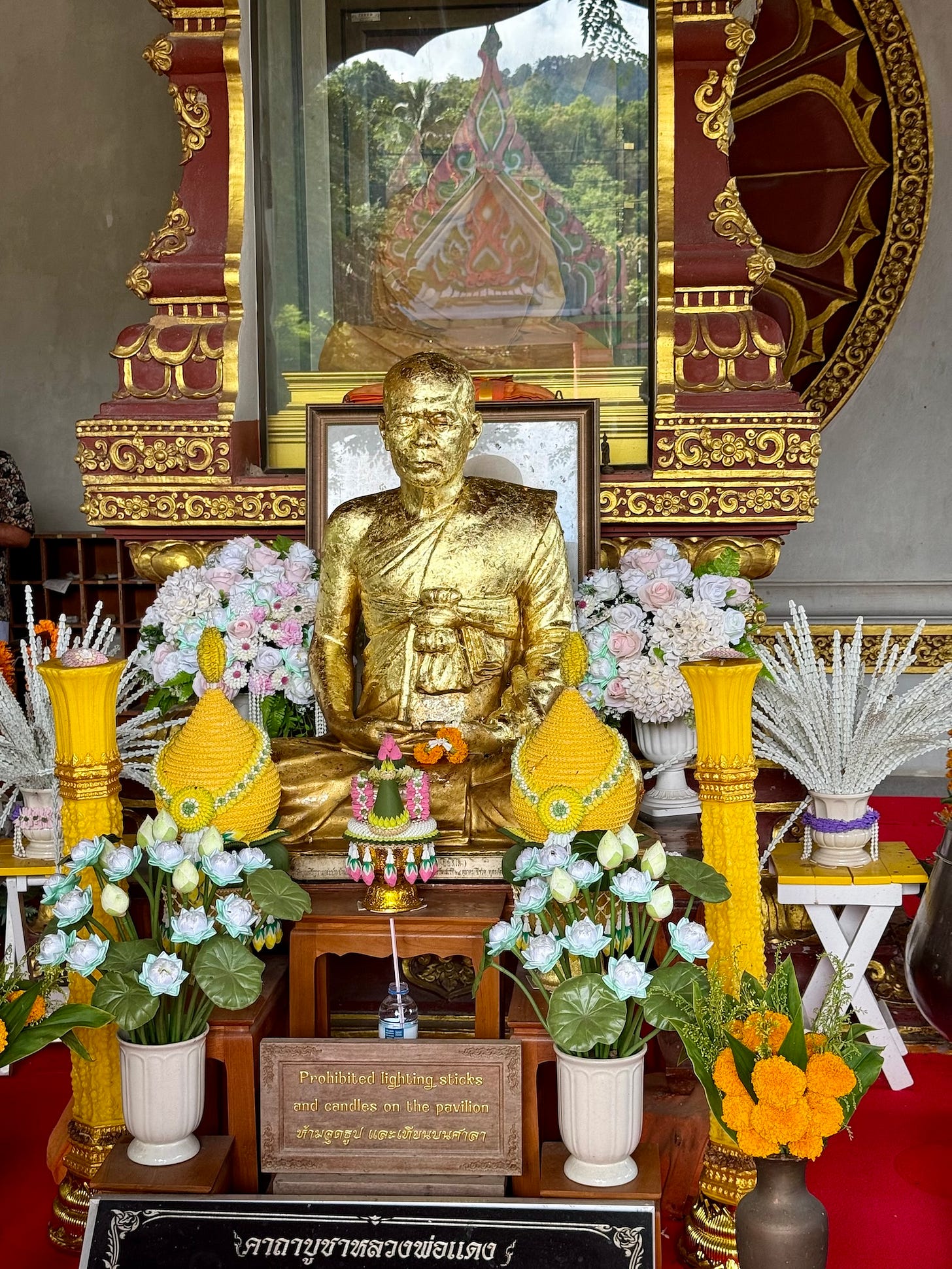
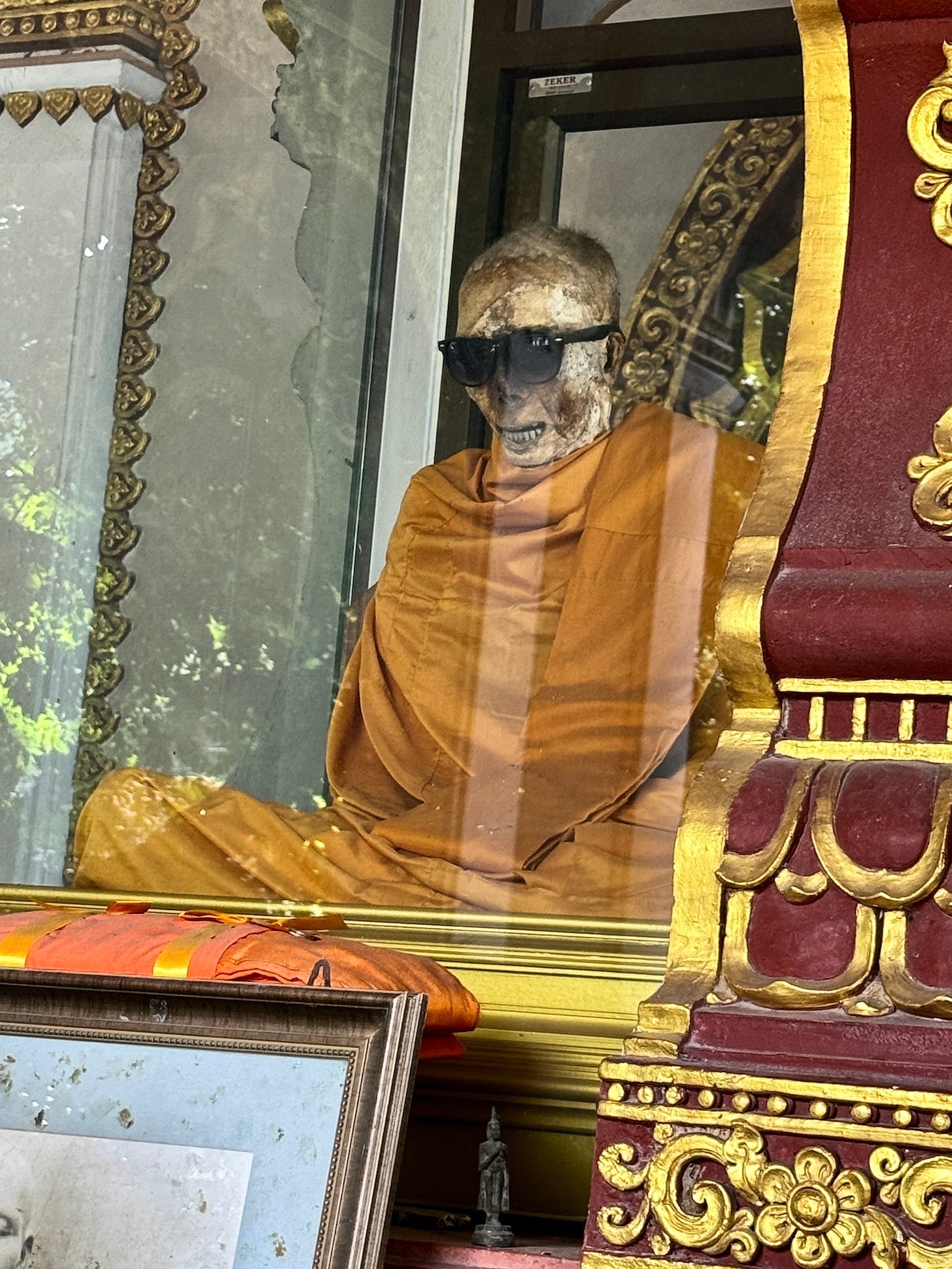

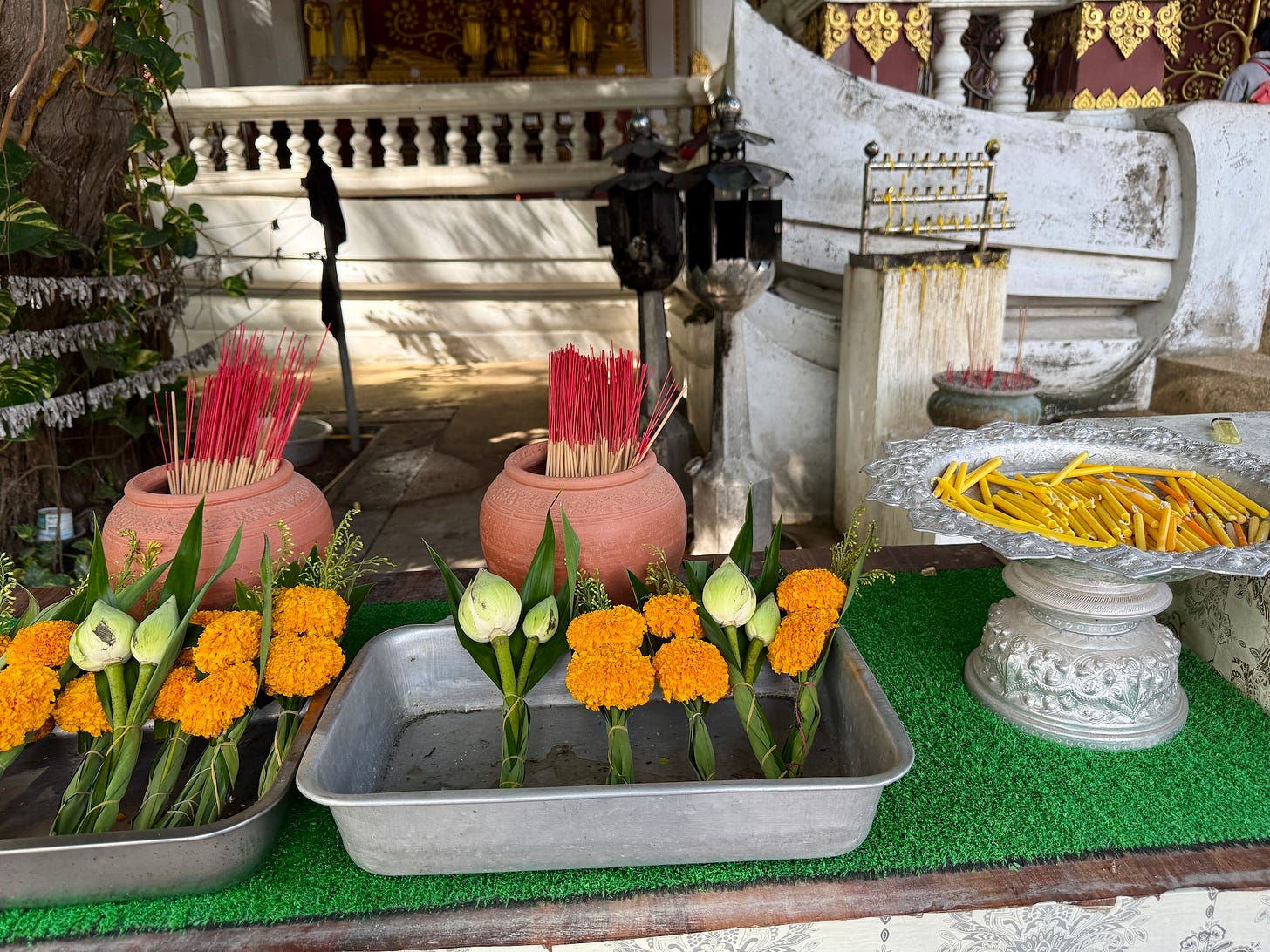
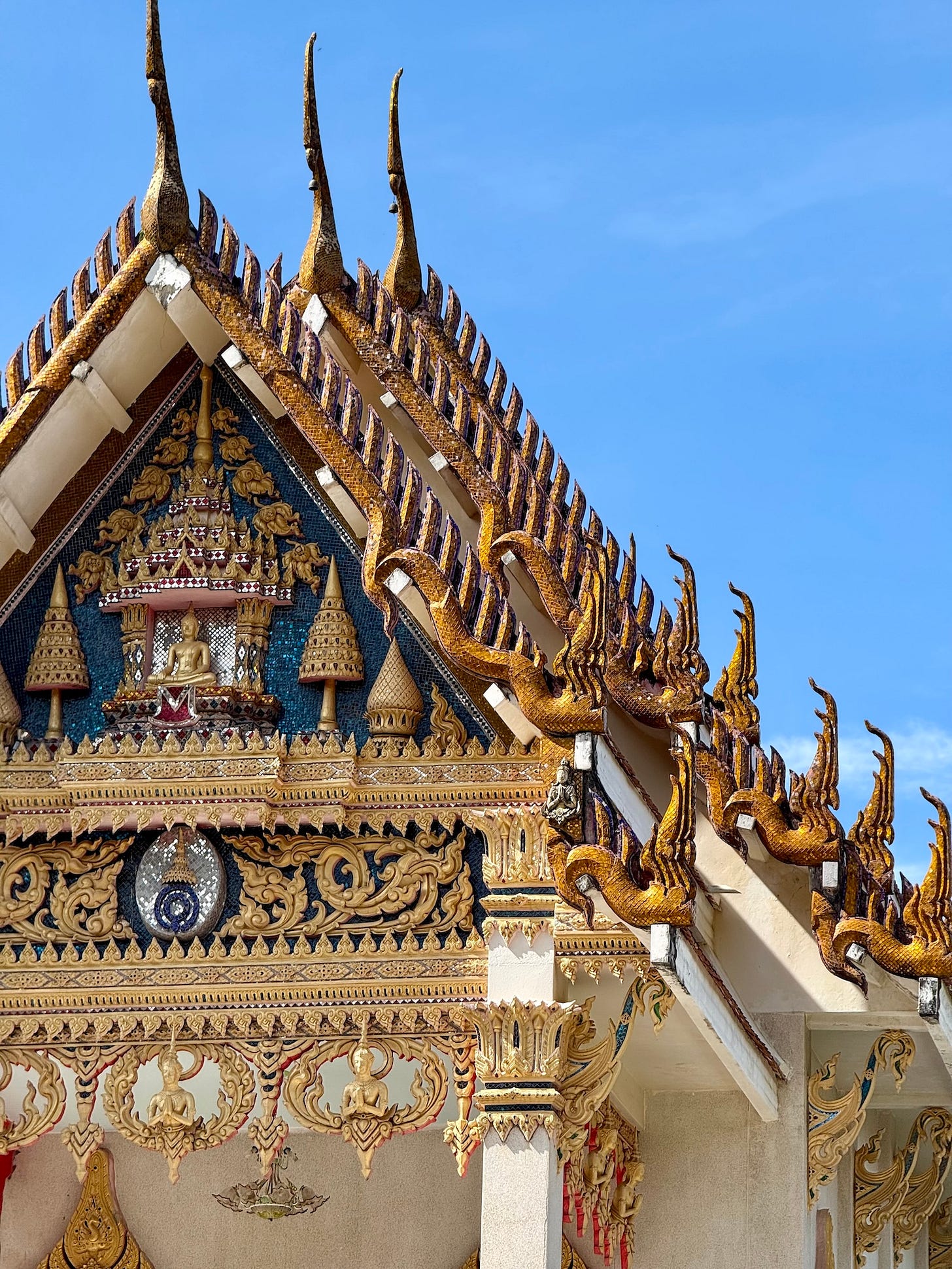
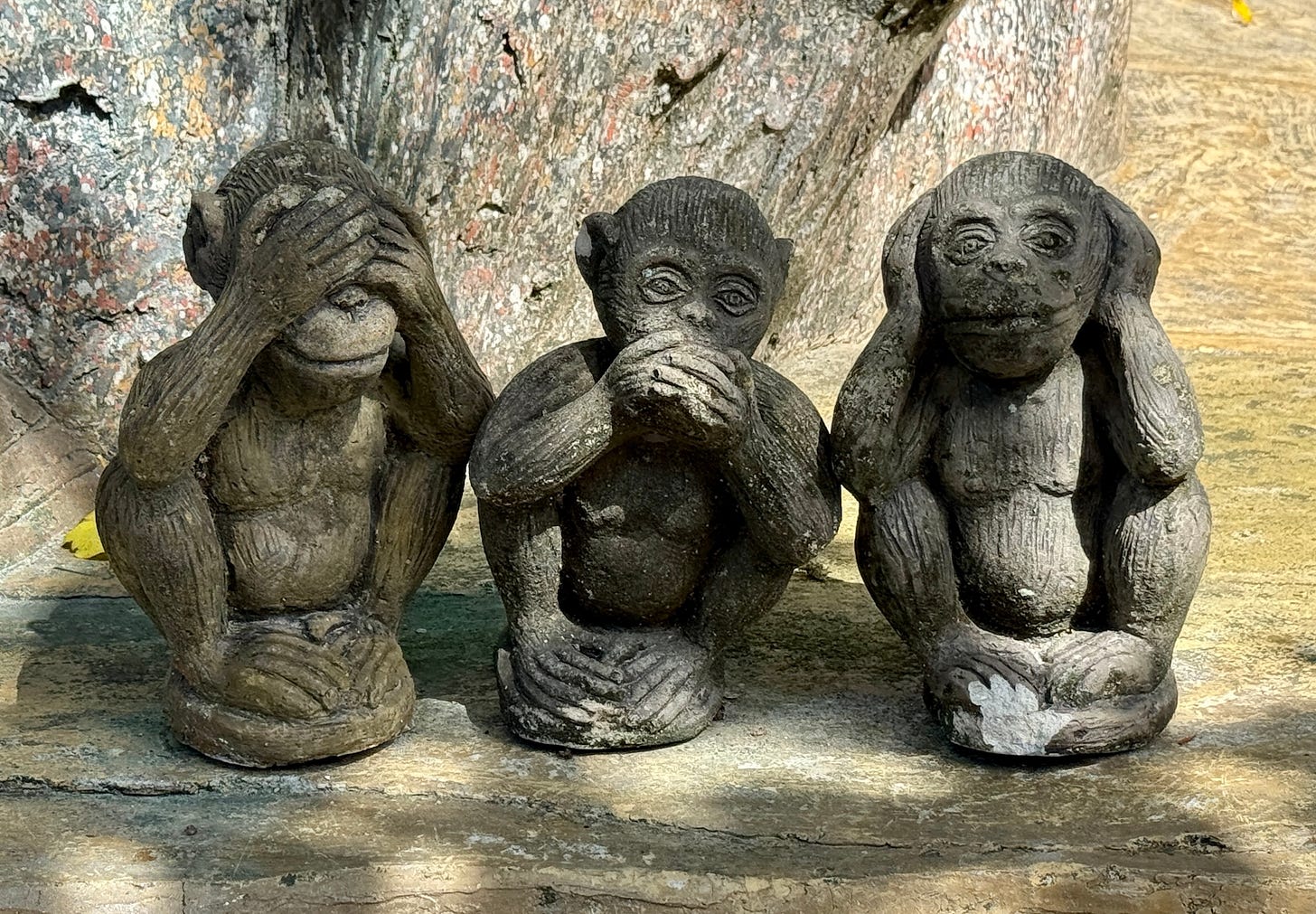
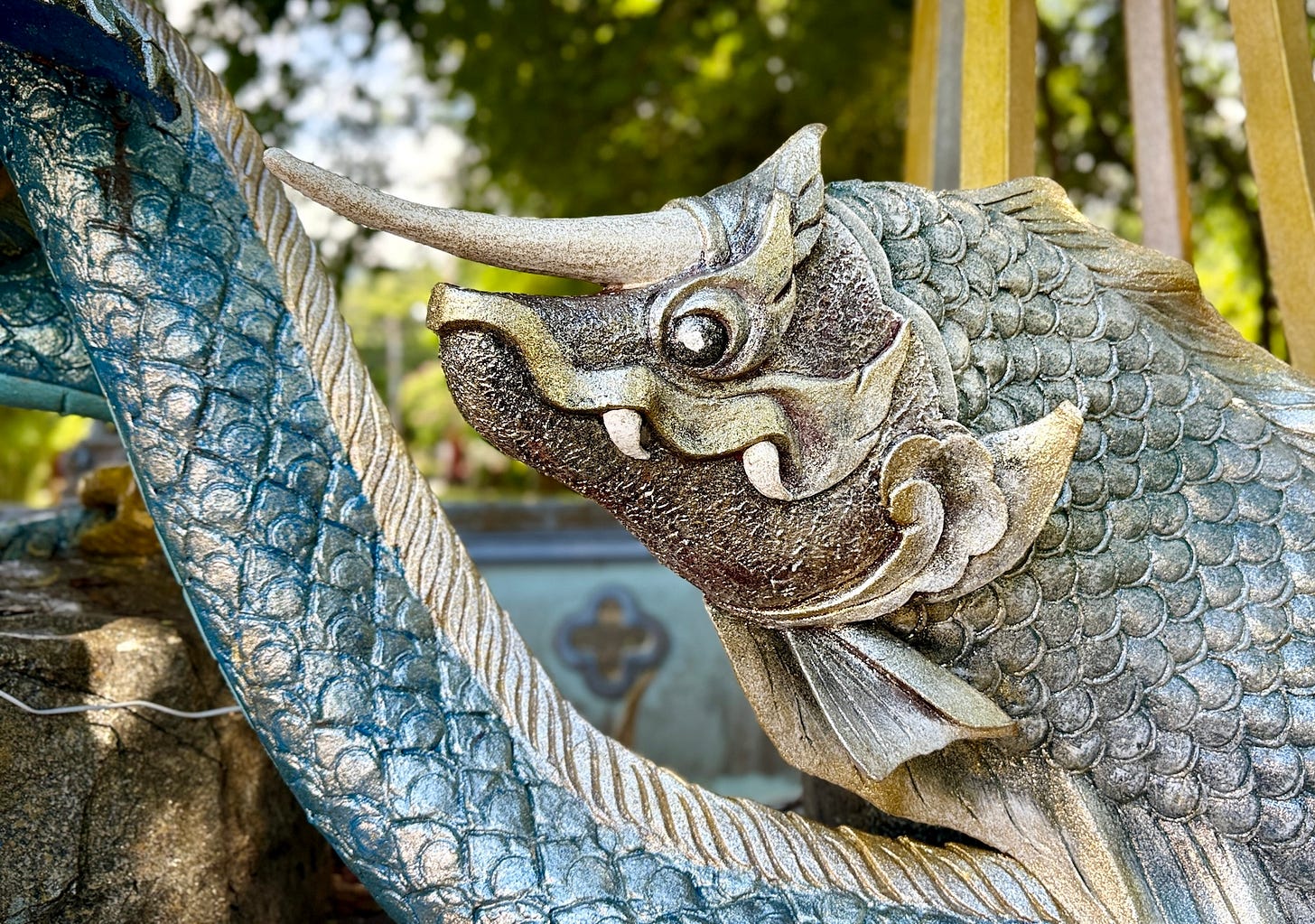

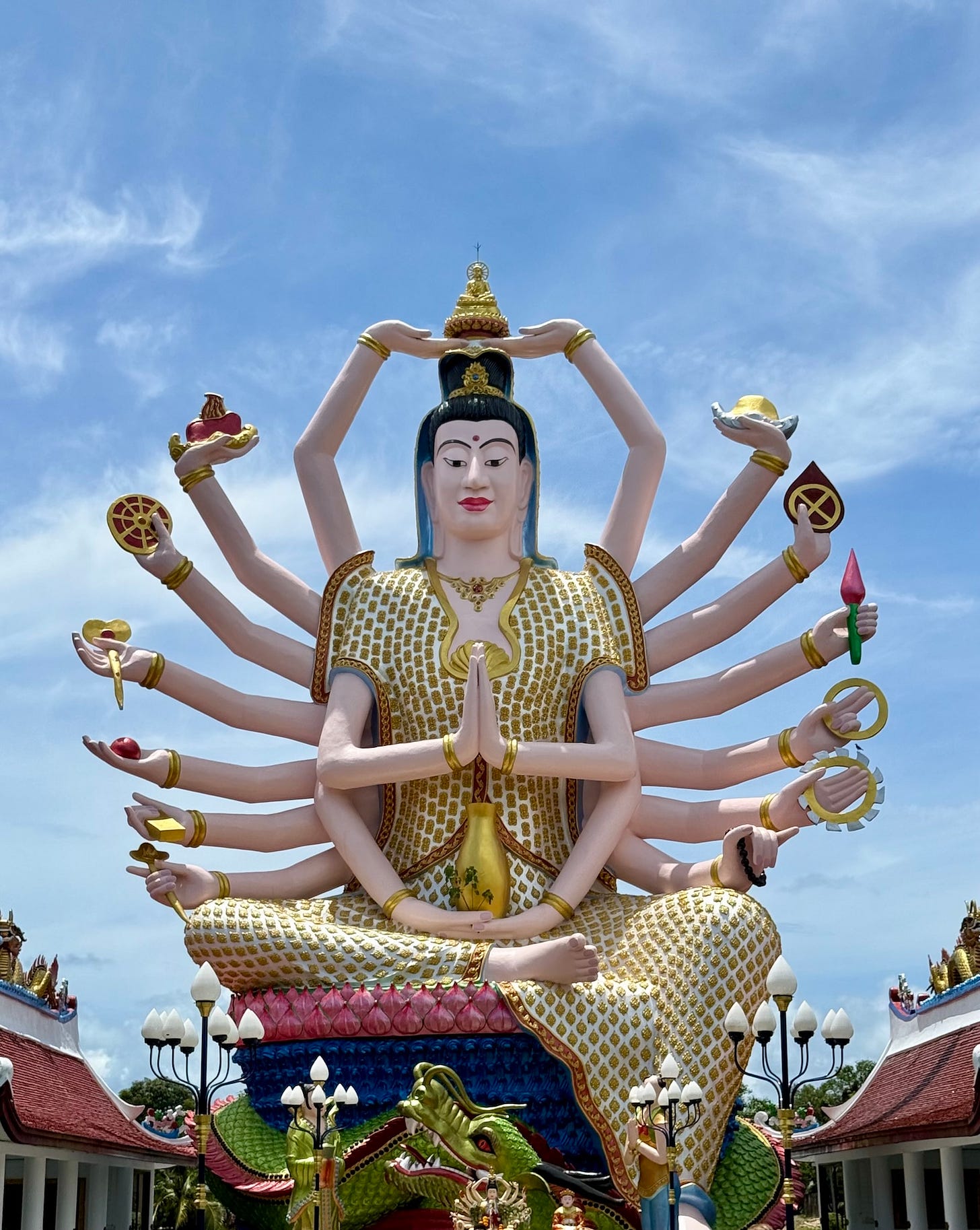
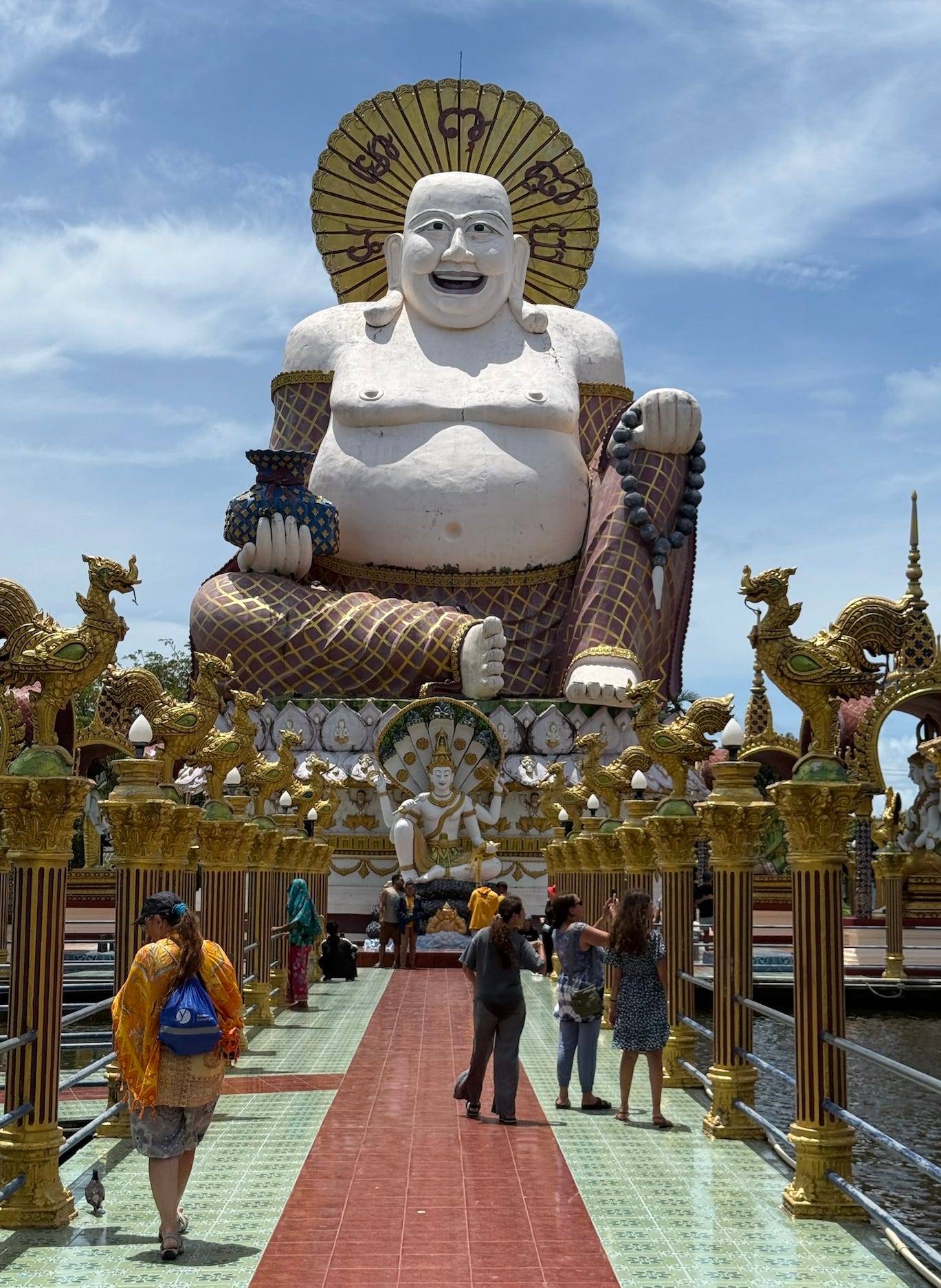
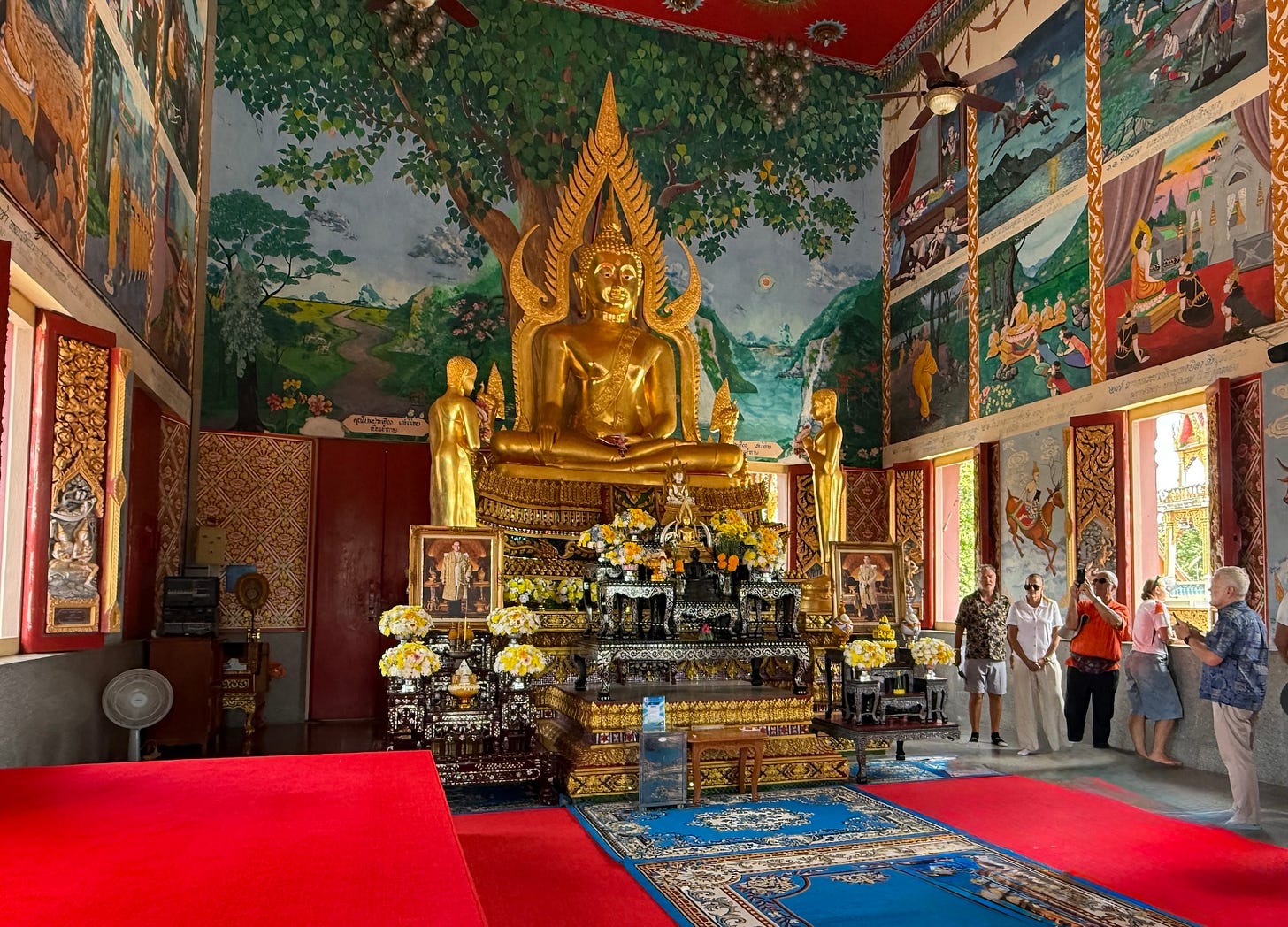
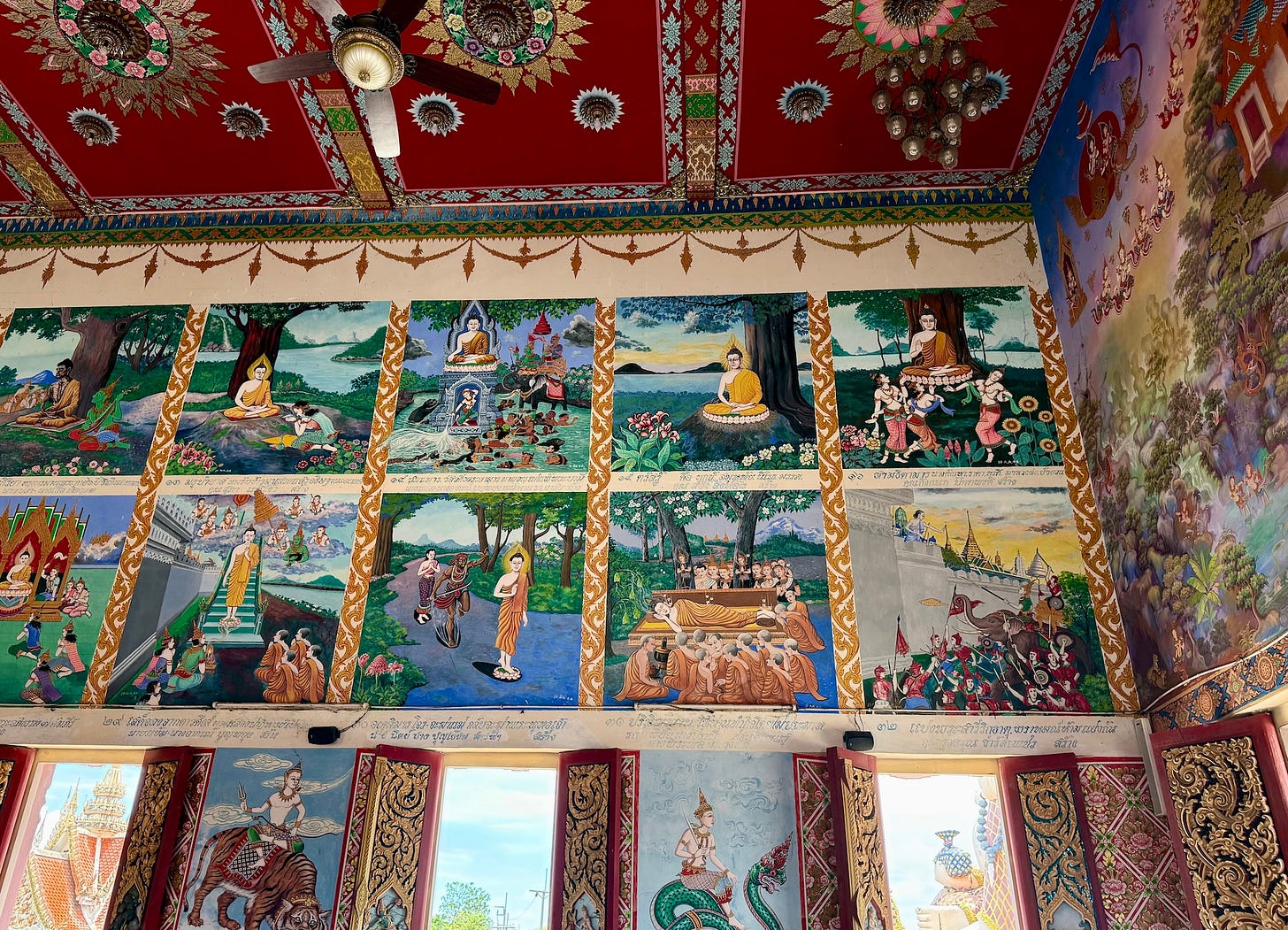
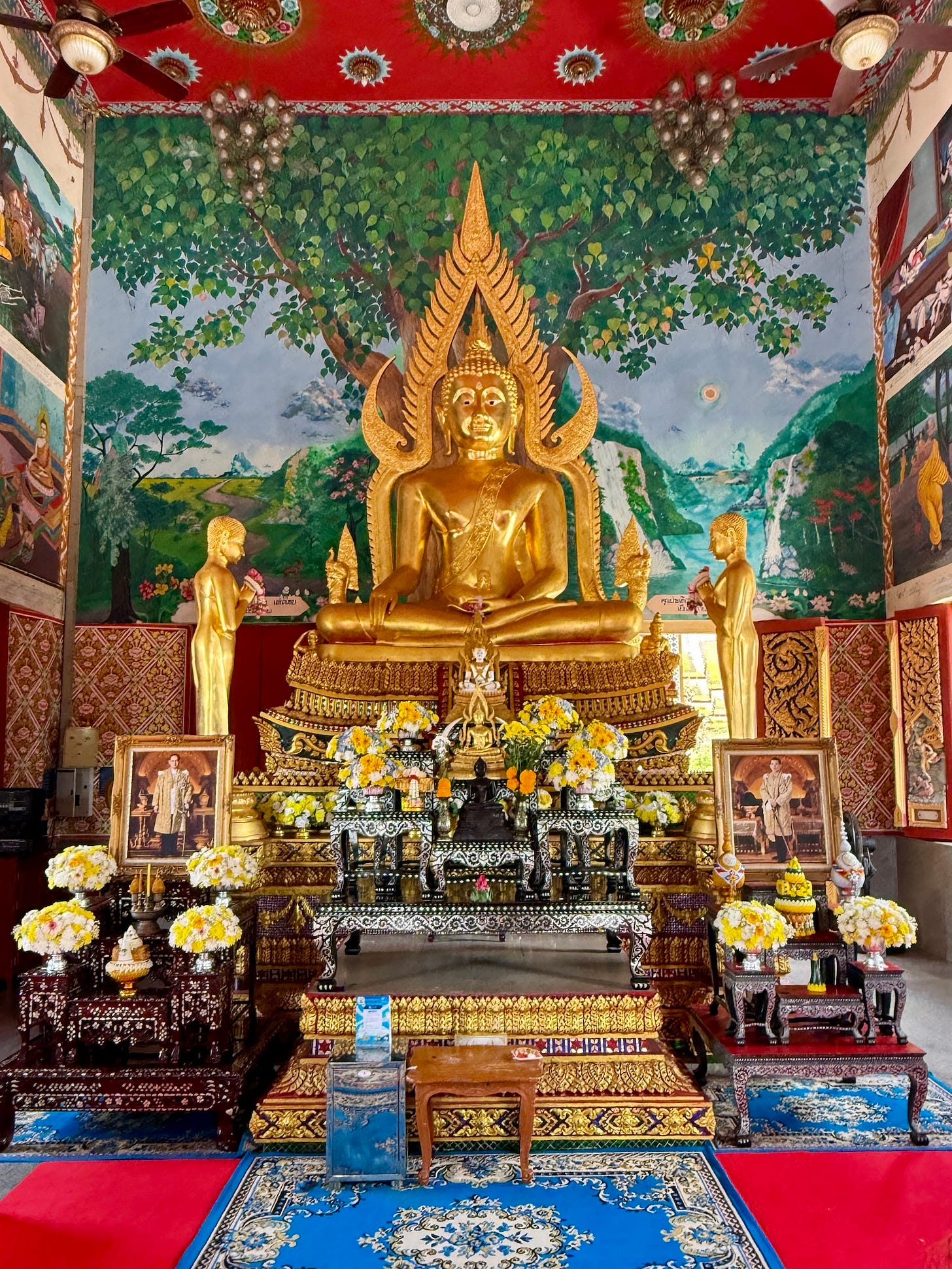
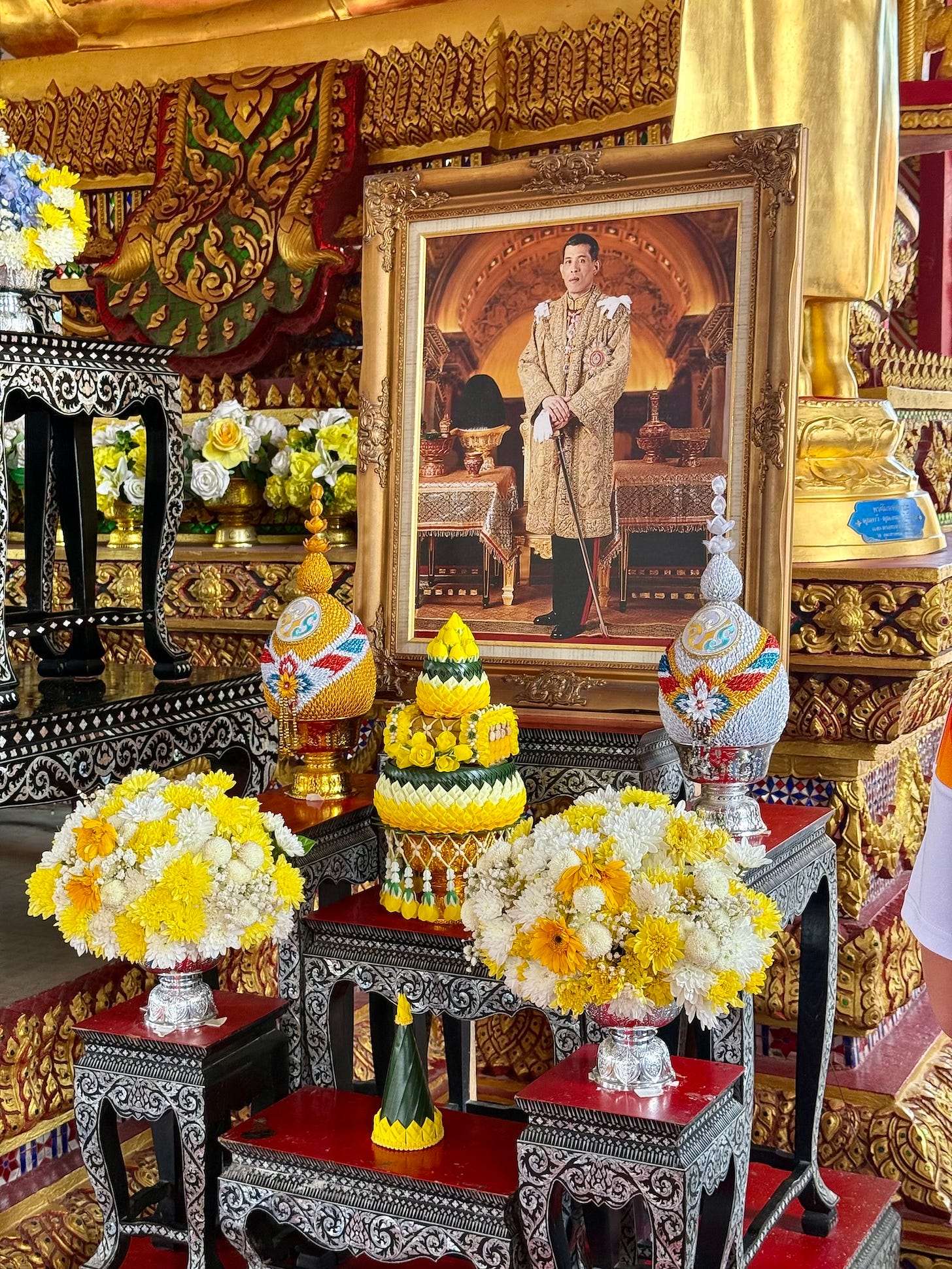
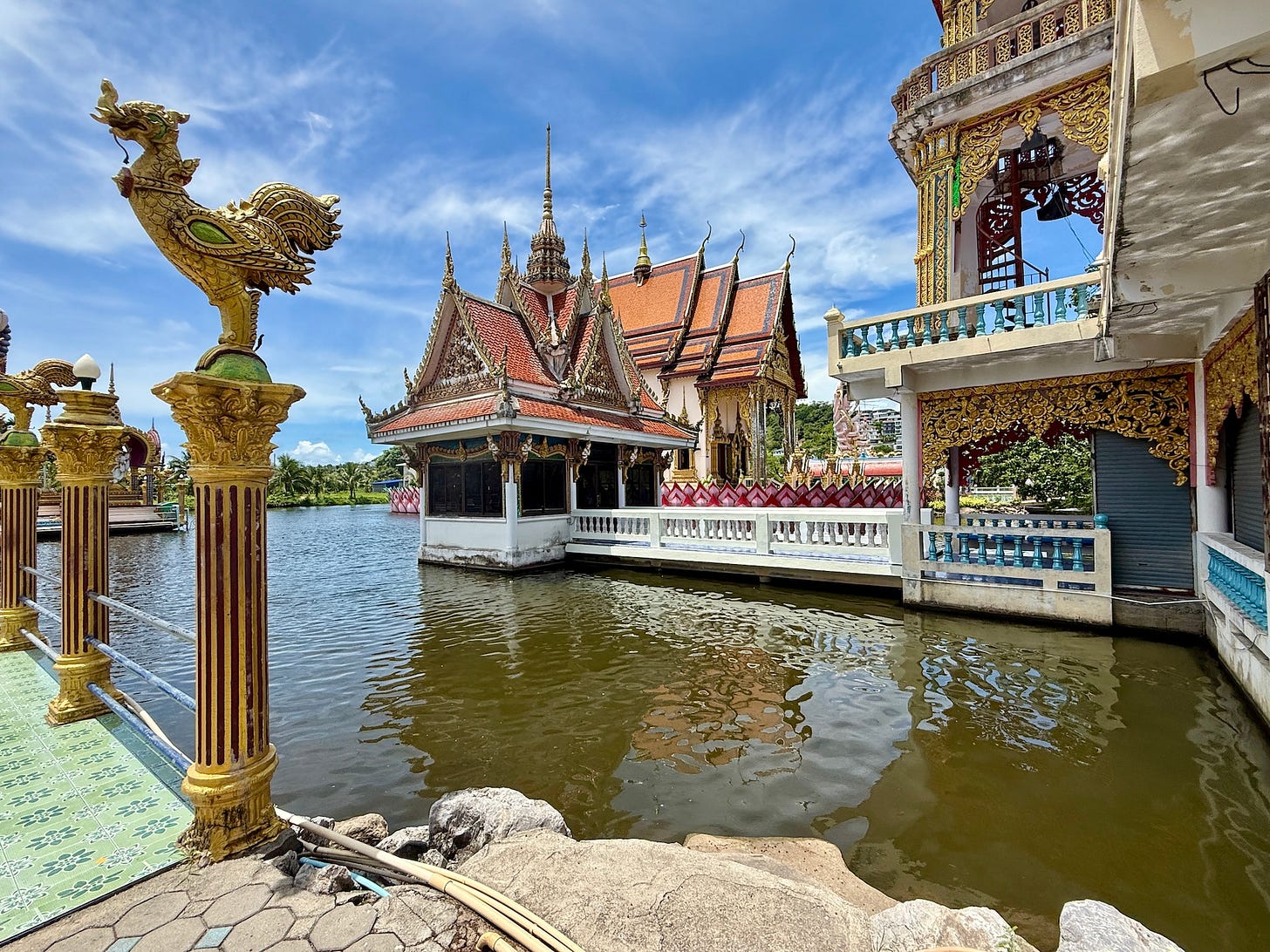
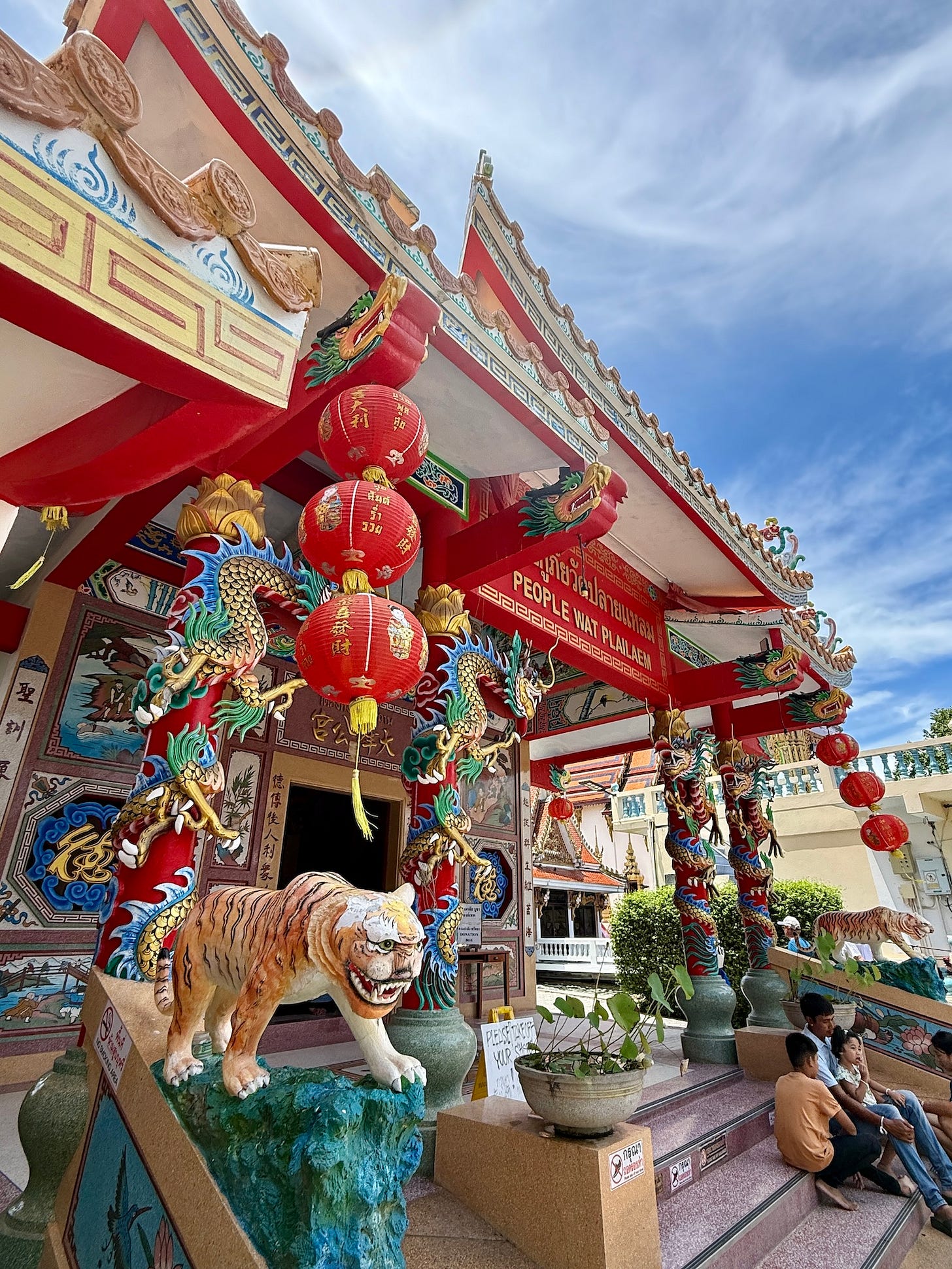


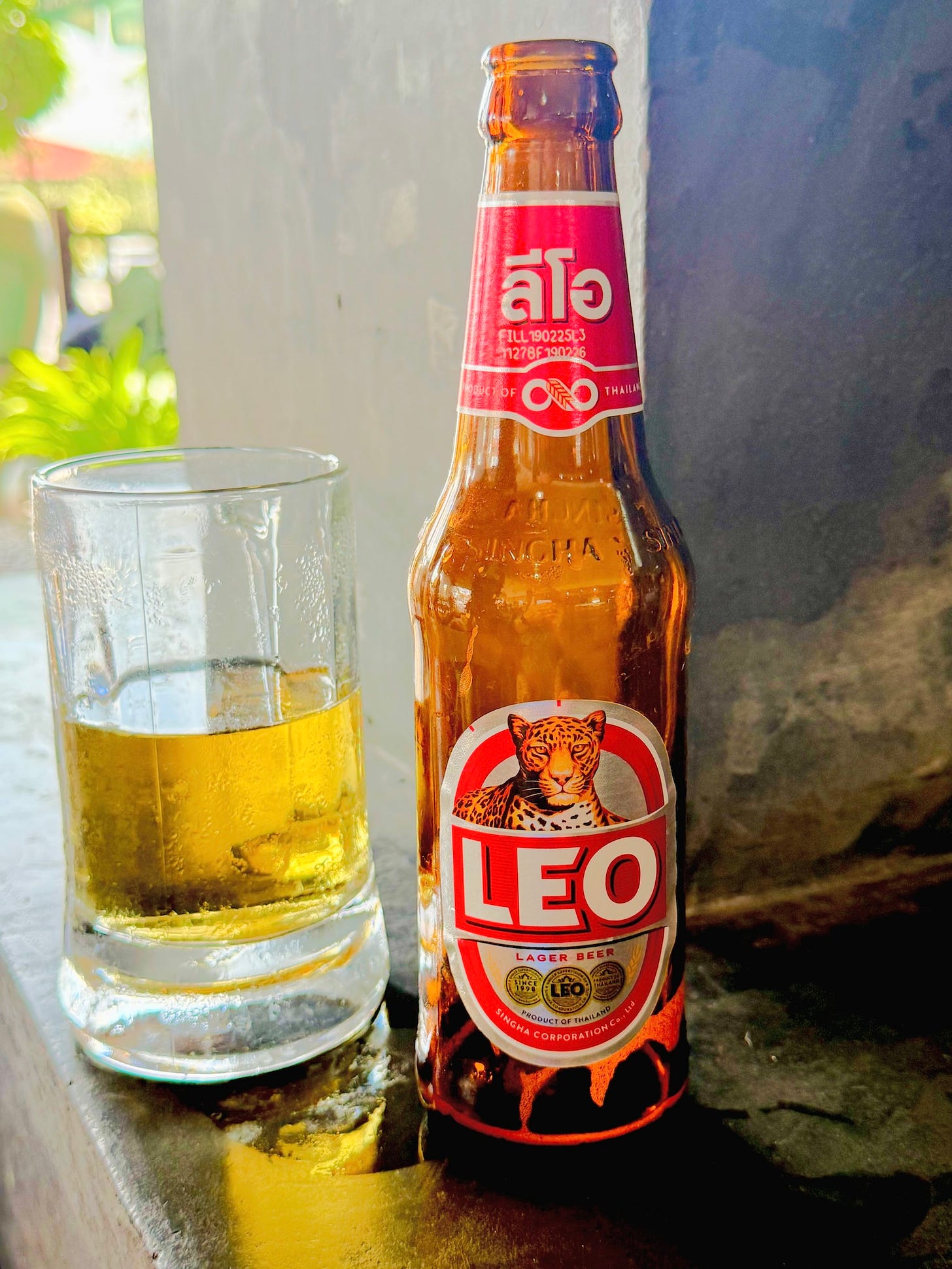
Also, so much to soak in from Ko Samui! Always something to observe and learn and experience! Loved learning! Beautifully written.
M&E love White Lotus! They probably would have enjoyed this!